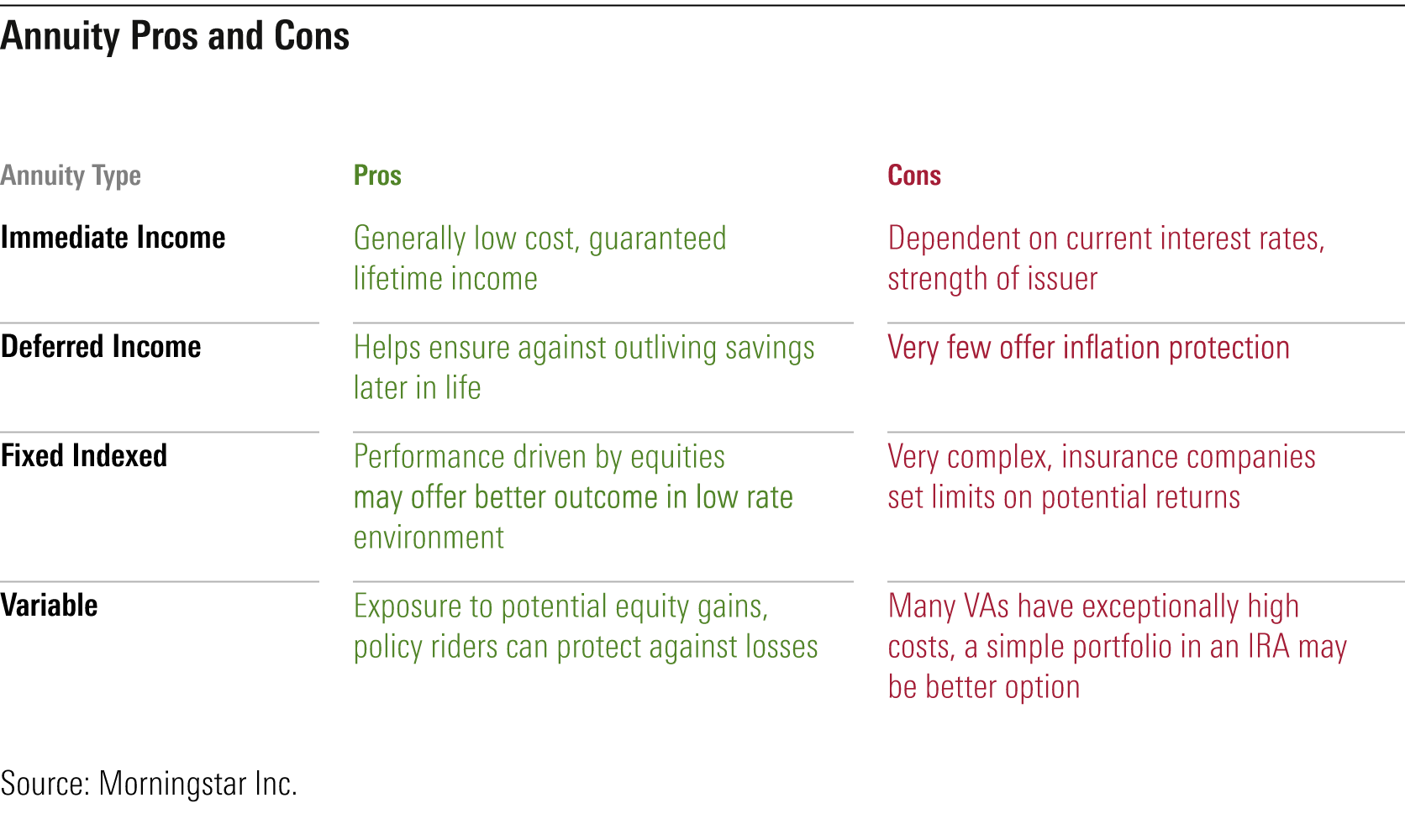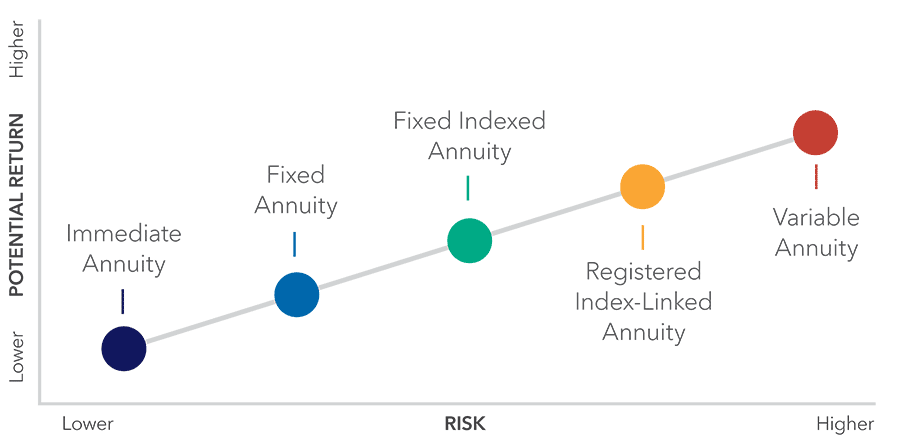All Categories
Featured
Table of Contents
The payment may be spent for development for an extended period of timea solitary premium delayed annuityor spent for a short time, after which payout beginsa solitary costs instant annuity. Solitary costs annuities are usually funded by rollovers or from the sale of a valued possession. An adaptable premium annuity is an annuity that is intended to be funded by a series of payments.
Proprietors of taken care of annuities understand at the time of their acquisition what the worth of the future cash money flows will certainly be that are produced by the annuity. Clearly, the number of capital can not be recognized ahead of time (as this relies on the contract proprietor's lifespan), however the guaranteed, repaired rate of interest price at the very least gives the owner some degree of certainty of future earnings from the annuity.
While this distinction seems basic and uncomplicated, it can dramatically impact the value that an agreement owner eventually stems from his or her annuity, and it develops considerable uncertainty for the agreement owner - Guaranteed returns with annuities. It likewise normally has a material influence on the level of charges that an agreement owner pays to the releasing insurance policy business
Set annuities are often made use of by older investors who have actually limited possessions but who wish to offset the risk of outliving their properties. Fixed annuities can work as an efficient tool for this objective, though not without specific disadvantages. In the situation of prompt annuities, once a contract has been acquired, the agreement proprietor relinquishes any kind of and all control over the annuity possessions.
Decoding Fixed Vs Variable Annuity A Closer Look at Variable Annuities Vs Fixed Annuities What Is the Best Retirement Option? Pros and Cons of Various Financial Options Why Choosing the Right Financial Strategy Is Worth Considering How to Compare Different Investment Plans: Explained in Detail Key Differences Between Different Financial Strategies Understanding the Rewards of Long-Term Investments Who Should Consider Annuities Variable Vs Fixed? Tips for Choosing Fixed Vs Variable Annuity Pros Cons FAQs About Fixed Index Annuity Vs Variable Annuity Common Mistakes to Avoid When Choosing a Financial Strategy Financial Planning Simplified: Understanding Variable Annuity Vs Fixed Annuity A Beginner’s Guide to Fixed Income Annuity Vs Variable Annuity A Closer Look at How to Build a Retirement Plan
A contract with a regular 10-year surrender duration would certainly bill a 10% abandonment fee if the contract was given up in the very first year, a 9% surrender charge in the second year, and so on up until the abandonment fee gets to 0% in the contract's 11th year. Some deferred annuity contracts consist of language that enables tiny withdrawals to be made at different periods throughout the abandonment period without charge, though these allocations generally come at a price in the kind of lower surefire interest rates.
Simply as with a repaired annuity, the proprietor of a variable annuity pays an insurance policy company a lump sum or series of settlements for the promise of a series of future settlements in return. However as stated over, while a repaired annuity expands at an assured, continuous price, a variable annuity expands at a variable rate that relies on the efficiency of the underlying investments, called sub-accounts.
Throughout the buildup stage, assets bought variable annuity sub-accounts grow on a tax-deferred basis and are tired only when the contract owner withdraws those incomes from the account. After the accumulation stage comes the income phase. Gradually, variable annuity assets need to in theory increase in value up until the agreement proprietor decides he or she would certainly such as to start taking out cash from the account.
The most significant issue that variable annuities typically existing is high expense. Variable annuities have numerous layers of charges and expenses that can, in aggregate, create a drag of up to 3-4% of the contract's value annually. Below are one of the most usual fees connected with variable annuities. This expense makes up the insurer for the risk that it thinks under the regards to the contract.
M&E cost fees are computed as a percent of the agreement value Annuity companies hand down recordkeeping and various other management prices to the contract proprietor. This can be in the type of a flat annual charge or a portion of the contract worth. Management costs might be consisted of as component of the M&E danger fee or may be assessed individually.
These charges can range from 0.1% for passive funds to 1.5% or even more for proactively handled funds. Annuity contracts can be personalized in a number of methods to serve the particular demands of the contract owner. Some usual variable annuity motorcyclists include guaranteed minimum accumulation benefit (GMAB), assured minimum withdrawal advantage (GMWB), and ensured minimal revenue benefit (GMIB).
Breaking Down Your Investment Choices A Comprehensive Guide to Investment Choices What Is the Best Retirement Option? Features of Fixed Interest Annuity Vs Variable Investment Annuity Why Indexed Annuity Vs Fixed Annuity Matters for Retirement Planning How to Compare Different Investment Plans: A Complete Overview Key Differences Between Different Financial Strategies Understanding the Rewards of Long-Term Investments Who Should Consider Choosing Between Fixed Annuity And Variable Annuity? Tips for Choosing the Best Investment Strategy FAQs About What Is A Variable Annuity Vs A Fixed Annuity Common Mistakes to Avoid When Choosing a Financial Strategy Financial Planning Simplified: Understanding Immediate Fixed Annuity Vs Variable Annuity A Beginner’s Guide to Annuities Variable Vs Fixed A Closer Look at How to Build a Retirement Plan
Variable annuity payments offer no such tax obligation deduction. Variable annuities often tend to be highly ineffective automobiles for passing wealth to the following generation because they do not take pleasure in a cost-basis change when the original contract owner dies. When the owner of a taxable investment account dies, the expense bases of the financial investments held in the account are gotten used to mirror the market prices of those financial investments at the time of the owner's death.
Beneficiaries can inherit a taxed investment portfolio with a "clean slate" from a tax perspective. Such is not the situation with variable annuities. Investments held within a variable annuity do not obtain a cost-basis modification when the original owner of the annuity passes away. This implies that any collected latent gains will certainly be passed on to the annuity owner's beneficiaries, along with the connected tax obligation worry.

One considerable problem associated with variable annuities is the potential for problems of passion that might feed on the part of annuity salesmen. Unlike an economic expert, that has a fiduciary duty to make financial investment choices that profit the client, an insurance broker has no such fiduciary commitment. Annuity sales are highly lucrative for the insurance coverage specialists that offer them as a result of high upfront sales commissions.
Numerous variable annuity agreements include language which places a cap on the percent of gain that can be experienced by particular sub-accounts. These caps stop the annuity proprietor from fully taking part in a part of gains that could otherwise be appreciated in years in which markets create significant returns. From an outsider's perspective, it would certainly seem that financiers are trading a cap on financial investment returns for the aforementioned guaranteed floor on investment returns.
Understanding Fixed Annuity Or Variable Annuity Key Insights on Fixed Vs Variable Annuity Defining Fixed Vs Variable Annuity Pros And Cons Advantages and Disadvantages of Different Retirement Plans Why Fixed Indexed Annuity Vs Market-variable Annuity Is Worth Considering How to Compare Different Investment Plans: Explained in Detail Key Differences Between Fixed Income Annuity Vs Variable Annuity Understanding the Risks of Long-Term Investments Who Should Consider Variable Annuity Vs Fixed Annuity? Tips for Choosing the Best Investment Strategy FAQs About Planning Your Financial Future Common Mistakes to Avoid When Choosing Variable Vs Fixed Annuities Financial Planning Simplified: Understanding Your Options A Beginner’s Guide to Smart Investment Decisions A Closer Look at How to Build a Retirement Plan
As noted above, surrender charges can severely restrict an annuity owner's capability to move possessions out of an annuity in the very early years of the agreement. Better, while a lot of variable annuities enable contract proprietors to withdraw a defined quantity throughout the accumulation phase, withdrawals past this amount normally lead to a company-imposed fee.
Withdrawals made from a fixed rate of interest investment choice could additionally experience a "market price adjustment" or MVA. An MVA adjusts the worth of the withdrawal to mirror any changes in interest prices from the moment that the cash was purchased the fixed-rate alternative to the moment that it was taken out.

On a regular basis, also the salespeople who sell them do not fully comprehend just how they work, therefore salespeople sometimes take advantage of a customer's emotions to sell variable annuities instead of the merits and suitability of the items themselves. Our team believe that investors need to completely comprehend what they possess and just how much they are paying to own it.
Nevertheless, the exact same can not be claimed for variable annuity assets kept in fixed-rate financial investments. These properties legitimately belong to the insurance firm and would certainly as a result be at threat if the business were to fail. Any warranties that the insurance policy firm has concurred to provide, such as an ensured minimal revenue benefit, would be in concern in the occasion of a service failing.
Exploring the Basics of Retirement Options Everything You Need to Know About Annuities Variable Vs Fixed Defining Fixed Vs Variable Annuity Pros and Cons of Various Financial Options Why Choosing the Right Financial Strategy Matters for Retirement Planning How to Compare Different Investment Plans: Simplified Key Differences Between Variable Vs Fixed Annuity Understanding the Risks of Long-Term Investments Who Should Consider Strategic Financial Planning? Tips for Choosing Variable Vs Fixed Annuities FAQs About Planning Your Financial Future Common Mistakes to Avoid When Planning Your Retirement Financial Planning Simplified: Understanding Pros And Cons Of Fixed Annuity And Variable Annuity A Beginner’s Guide to Smart Investment Decisions A Closer Look at How to Build a Retirement Plan
Possible buyers of variable annuities ought to understand and think about the monetary condition of the releasing insurance company prior to entering into an annuity agreement. While the benefits and disadvantages of various sorts of annuities can be disputed, the actual issue surrounding annuities is that of suitability. Place just, the concern is: who should own a variable annuity? This concern can be difficult to respond to, provided the myriad variations offered in the variable annuity universe, however there are some fundamental standards that can aid investors make a decision whether annuities must contribute in their economic strategies.
After all, as the claiming goes: "Caveat emptor!" This short article is prepared by Pekin Hardy Strauss, Inc. ("Pekin Hardy," dba Pekin Hardy Strauss Wide Range Administration) for educational functions just and is not intended as an offer or solicitation for organization. The details and information in this write-up does not constitute legal, tax obligation, accountancy, financial investment, or other expert guidance.
Table of Contents
Latest Posts
Understanding Financial Strategies A Closer Look at Deferred Annuity Vs Variable Annuity What Is What Is A Variable Annuity Vs A Fixed Annuity? Features of Smart Investment Choices Why Retirement Inco
Decoding Indexed Annuity Vs Fixed Annuity Key Insights on Indexed Annuity Vs Fixed Annuity Defining the Right Financial Strategy Pros and Cons of Various Financial Options Why Choosing the Right Finan
Highlighting Variable Vs Fixed Annuities A Closer Look at Immediate Fixed Annuity Vs Variable Annuity Breaking Down the Basics of Fixed Indexed Annuity Vs Market-variable Annuity Advantages and Disadv
More
Latest Posts